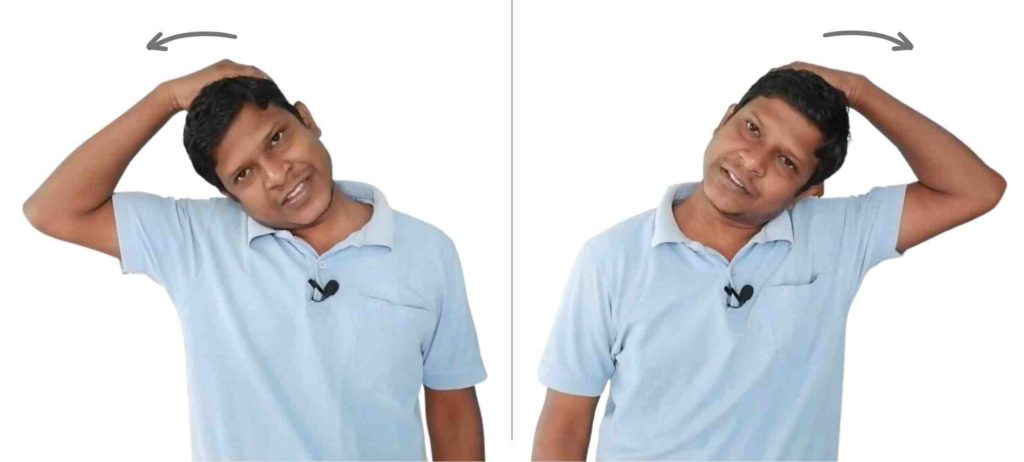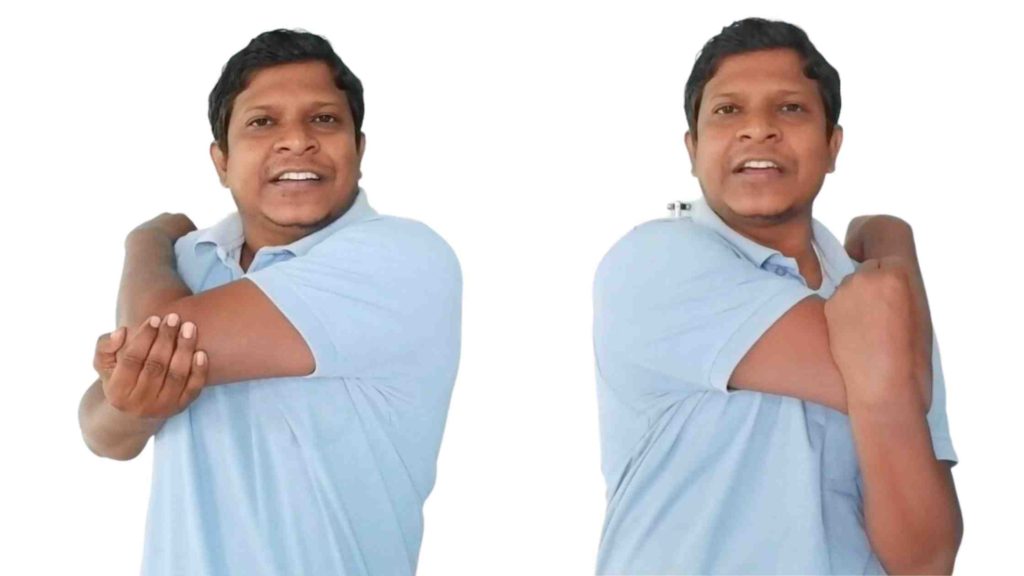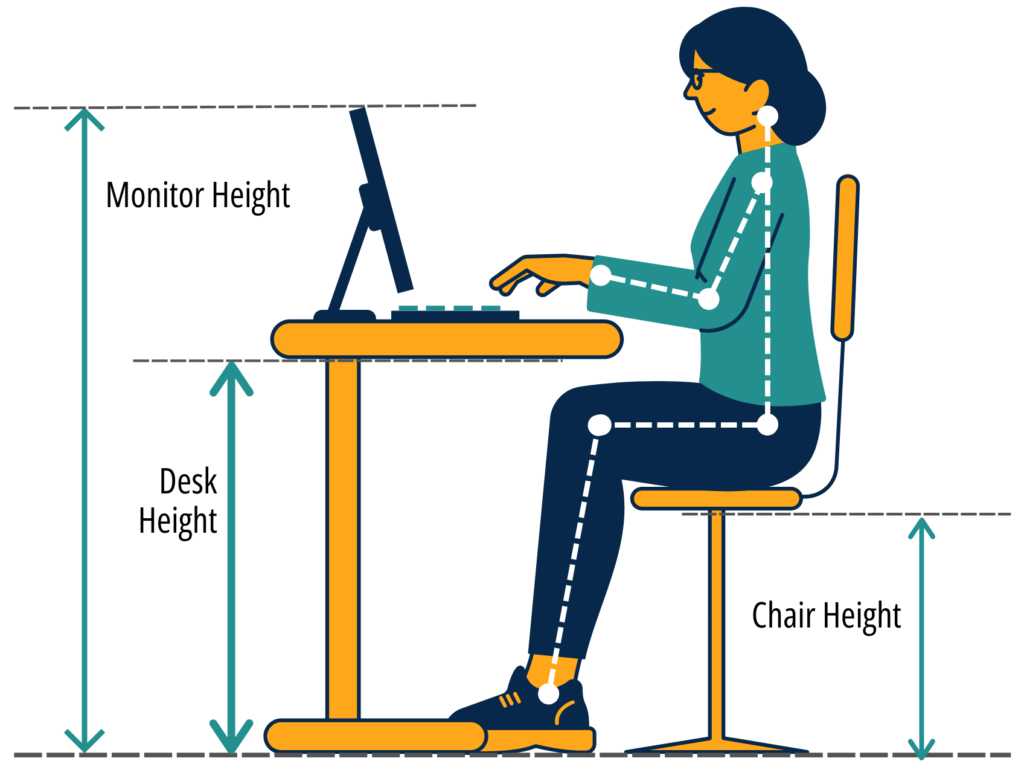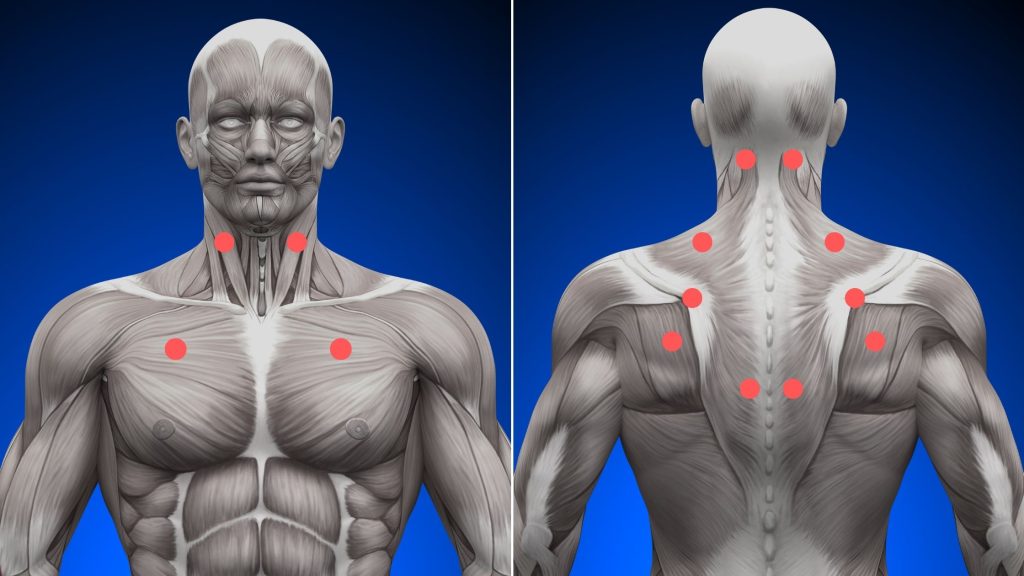Last updated on April 19th, 2025 at 11:17 am

As winter sets in, you may have noticed an increase in neck pain or aches, often accompanied by upper back and body pain. While there is no scientific evidence to support it, my clinical experience suggests that fibromyalgia may be the main cause.
However, other factors also contribute to neck pain during cold weather, which we’ll cover in this article. Additionally, we’ll provide practical tips you can use at home to manage the pain. So, let’s dive in.
Cold weather and neck pain
As I mentioned earlier, the leading cause of neck pain during winter is fibromyalgia, which is also known as myofascial trigger points. Myofascial trigger points are hypersensitive spots or nodules that can develop in any muscle. Temperature changes can trigger myofascial trigger point pain.
Barometric pressure, which is the amount of atmospheric pressure exerted on us, is also a significant factor. During summer days, the barometric pressure tends to be high, while in winter, it drops suddenly, causing muscle aches and pains. Wind is known to cause a decrease in barometric pressure, leading to fatigue, headaches, and muscle aches in individuals with myofascial trigger points.
Now, coming to the other factors that flare up pain during winter:
- Muscle Contraction: In colder temperatures, our muscles tend to contract to keep warm. This muscle tension can affect the neck region, leading to stiffness and discomfort.
- Reduced Blood Flow: Cold weather can constrict blood vessels, reducing blood flow to various body parts, including the neck. This decreased blood flow may hinder the delivery of essential nutrients and oxygen to the muscles, potentially leading to pain and stiffness.
- Poor Posture: In an attempt to shield ourselves from the cold, we often hunch our shoulders, bury our necks and round our backs. Such poor posture can strain the neck muscles, causing pain over time.
Common complaints
Patients feel continuous dull, deep, aching pain, which makes them uncomfortable throughout the day. This discomfort can lead to irritation, frustration, sleep disorders and even psychological problems. Applying pressure on the tender spots can reproduce pain that spreads around the neck.
- Pain around neck & shoulder.
- Fatigue.
- Change in sleep pattern.
- Pain flare-up by doing the
daily chorus . - The feeling of neck stiffness.
- Neck movement is limited due to pain.
Tips to Alleviate Neck Pain in Cold Weather
During severe pain, rest is advisable. During rest, apply any good quality pain balm and after 10 minutes, apply heat treatment over the pain area. You can use an infrared lamp or hot water bottle/ electric heating pad. Myofascial Trigger points or muscle knot sufferers can use a hot pack over the tender area. For trigger points, we highly advise the myofascial release self-massage technique. As the severity subsides, one should follow neck exercises.
In this article, I will explain two of the most essential and effective stretching exercises. For other neck pain exercises, please refer to this article “What is Spondylosis Cervical? 6 Easy Exercises for Quick Relief“.
Neck stretching exercise

The neck stretching exercise is a simple yet effective way to relieve tension and stiffness in the neck muscles.
- To perform this exercise, start by standing or sitting up straight with relaxed shoulders.
- To stretch the right side neck muscle, take your left hand and place it over the right temple area.
- Then, gently tilt and pull your head to the left side, bringing your ear towards your shoulder. Pull it to a point where you feel a gentle stretch on the right side of the neck muscle.
- Hold this position for 10-15 seconds, feeling the stretch on the opposite side of your neck.
- Repeat on the other side and continue alternating for a few minutes.
This exercise can be done anytime, anywhere, and is a great way to reduce neck pain and improve mobility.
Shoulder blade muscle stretching

Chances are, not only the neck muscles but also the muscles of the upper back and shoulders may get stiff. So, we should also stretch the shoulder blade muscle. This stretching is very easy and will give you almost instant pain relief.
- To do this exercise, you must sit on a chair with a straight back and your feet flat.
- Raise your left arms in front of yourself at the shoulder level.
- Take your right hand grab the left elbow, and pull it towards your chest.
- This will create a comfortable stretching on the left shoulder blade muscles. Hold this for 30 seconds, and then let it relax.
- Repeat the same process on the right side. Repeat it for 3 to 4 times on each side.
Other useful home tips not to ignore:
- Stay Warm: Layer up to keep your body warm. A warm neck scarf or turtleneck can provide insulation for your neck muscles.
- Maintain Good Posture: Be mindful of your posture, especially when out in the cold. Keep your shoulders relaxed and your neck aligned with your spine.
- Regular Stretching: Incorporate gentle neck stretches into your daily routine to keep your neck muscles supple.
- Stay Active: Regular physical activity can help improve blood circulation, reducing the risk of muscle stiffness.
- Heat Therapy: Applying a warm compress to your neck can relax tense muscles and improve blood flow.
- Hydrate and Nutrition: Drink plenty of water and ensure you get essential nutrients to keep your muscles and joints healthy.
They can also use portable IFT machine, which is very easy to operate. It can be purchased from any Physiotherapy Equipment dealer.
Once the severe pain subsides, they can do neck exercises as suggested by your physiotherapist.
Keep Reading: What happens to your body when you sit all day?
The author is a physiotherapist who has been practising for the last 17 years. He holds a Bachelor's in Physiotherapy (BPT) from SVNIRTAR (Swami Vivekananda National Institute of Rehabilitation and Research), one of the prestigious physiotherapy schools in India.
Whatever he learns dealing with his patient, he shares it with the world through blogs and e-books. He also owns a YouTube channel, "Sunit Physiotherapist" with over 8 lakh active subscribers. Here, he shares everything he gets to learn serving the patient.






Nice!
Glad that you like my blog 🙂
hello sir, i am very enjoying reading your blog because is very educative. i am really benefiting from all your blog. thank you sir and keep it up.
I really loved reading your blog. It was very well authored and easy to understand. Unlike other blogs I have read which are really not that good.Thanks alot! inversion table for neck pain
Than ku so much Dr. Gnanaranjan
Thank U very much sangeeta.. keep reading next blogs
Thanx Rahul
fantastic; good insight & simplicity in your explanation
superb blog. gud to know what we didn't know before.hope to get more blog like this soon. gud job.keep it up.
very nicely written………a new perspective to a very common problem